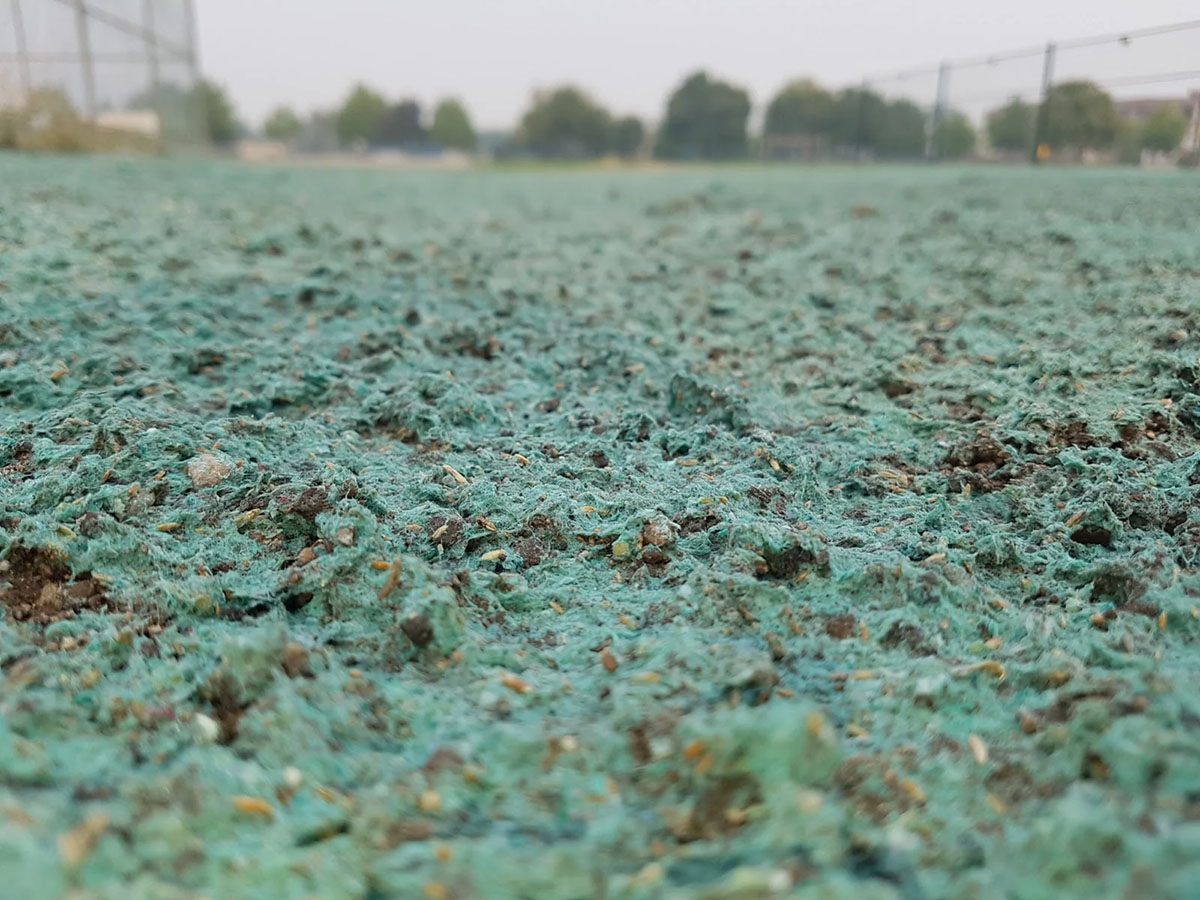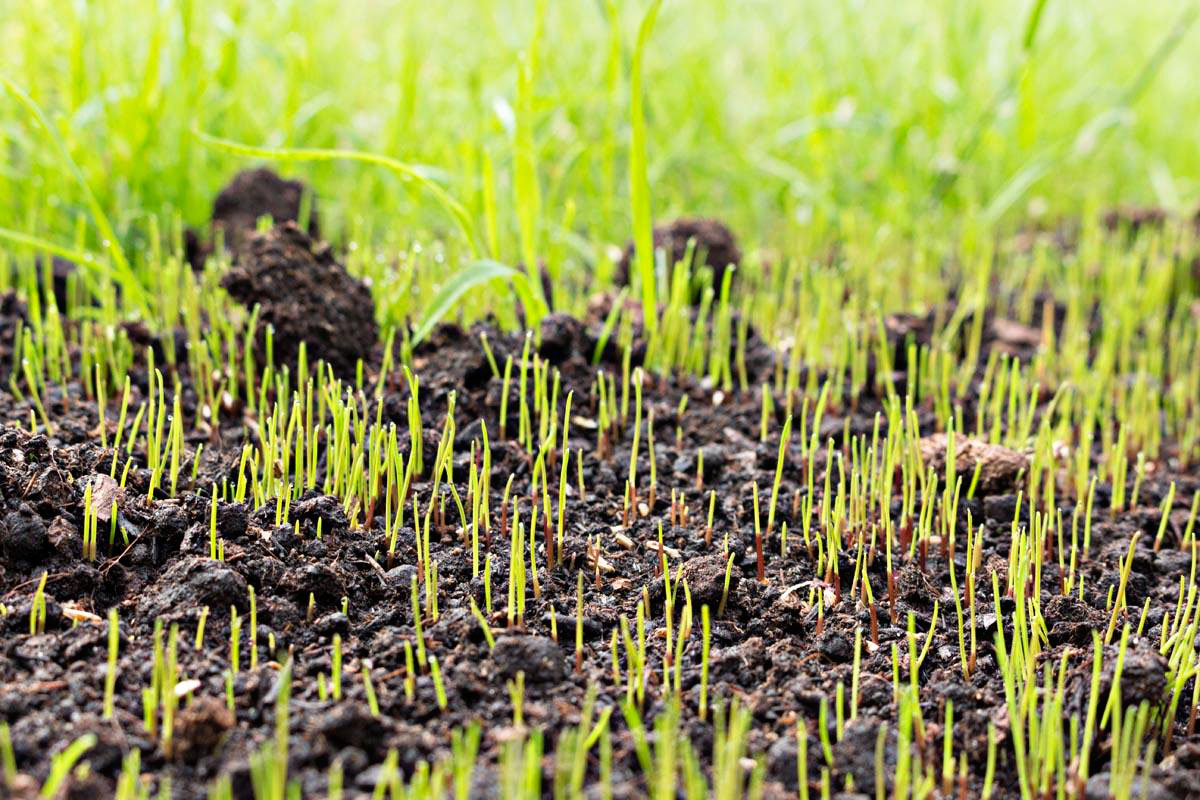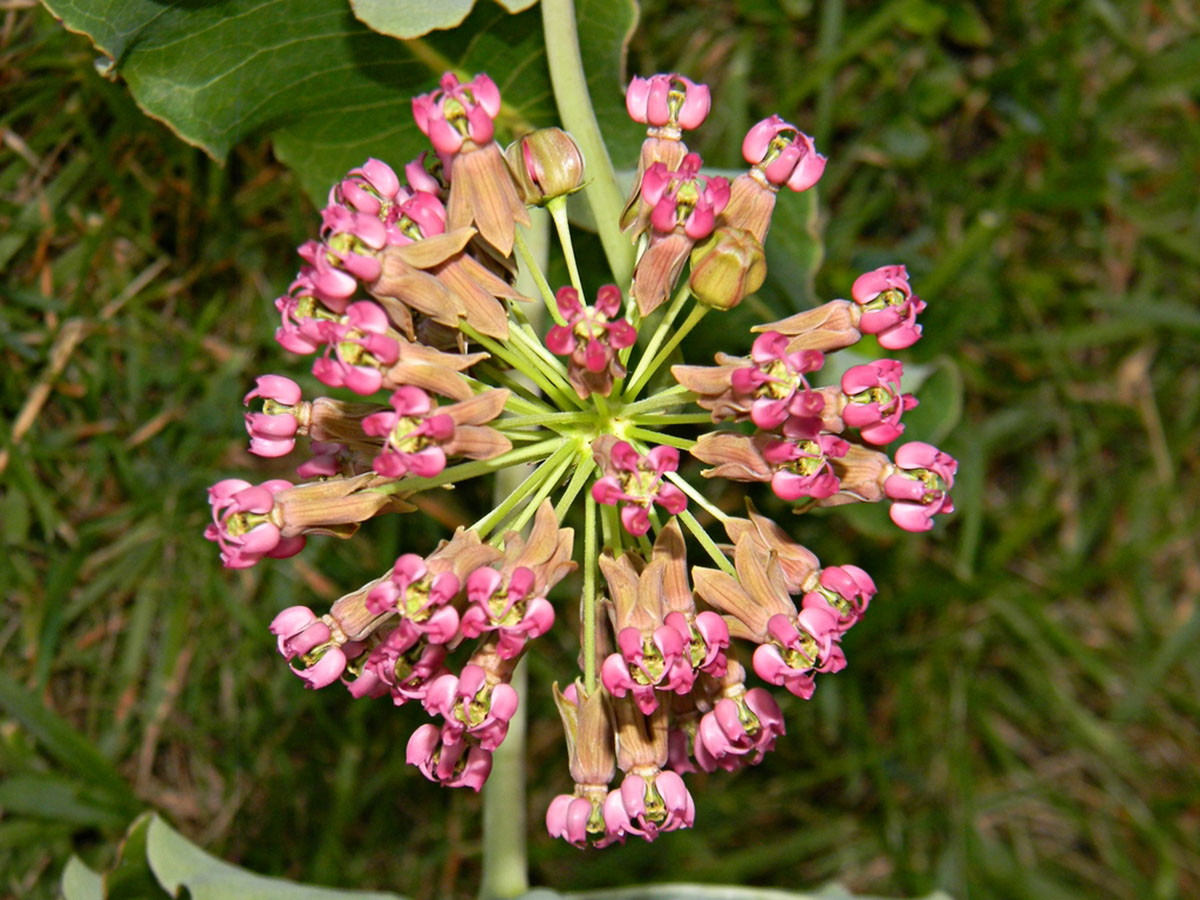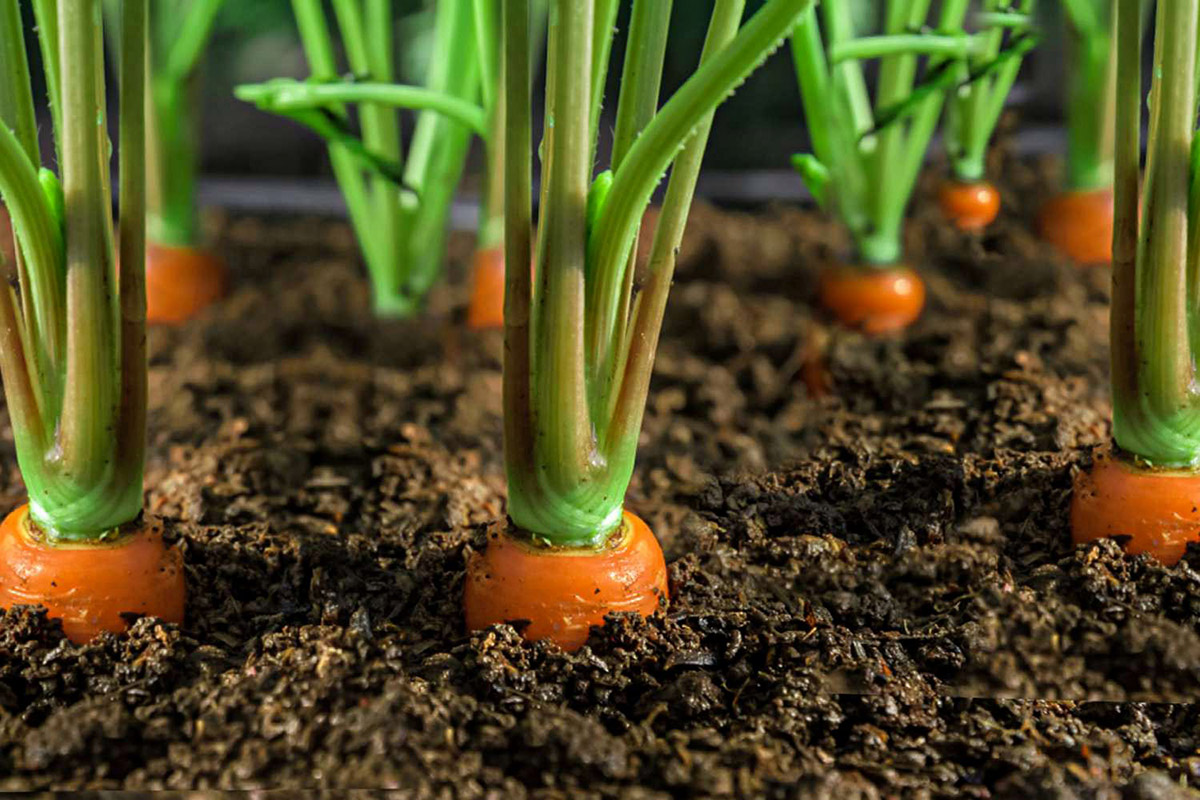Home>Garden Essentials>How Long To Germinate Pitaya


Garden Essentials
How Long To Germinate Pitaya
Modified: March 15, 2024
Learn how long it takes for pitaya seeds to germinate in your garden. Get expert tips and advice on growing pitaya plants from seed.
(Many of the links in this article redirect to a specific reviewed product. Your purchase of these products through affiliate links helps to generate commission for Storables.com, at no extra cost. Learn more)
Introduction
Welcome to the wonderful world of pitaya! If you’re a gardening enthusiast or someone looking to add a unique and exotic plant to your garden, pitaya, also known as dragon fruit, is a great choice. Native to Central and South America, pitaya is famous for its vibrant colors, tropical flavors, and stunning flowers.
In this article, we’ll explore the germination process of pitaya and provide insights into the factors that can affect the time it takes for pitaya seeds to sprout. So whether you’re a beginner or an experienced gardener, read on to discover the secrets of successfully germinating pitaya seeds and enjoy the beauty and flavors this plant has to offer.
But first, let’s understand what pitaya is and why it’s garnered so much attention in the gardening world.
Pitaya refers to the fruit of several cactus species belonging to the genus Hylocereus and Selenicereus. These plants are known for their sprawling, vining stems and stunning nocturnal flowers. The fruit itself is oval or pear-shaped, with a vibrant pink or yellow skin and soft flesh that is speckled with small, edible black seeds. The taste of pitaya can be described as a combination of kiwi and pear, with a subtle sweetness and a hint of citrus.
Now that we’re acquainted with pitaya, let’s delve into the germination process. Germination is the process by which a seed develops into a new plant. In the case of pitaya, it typically starts with obtaining viable seeds. You can either save seeds from a mature pitaya fruit or purchase them from a reputable supplier.
Once you have your pitaya seeds, it’s time to start the germination process. Keep in mind that pitaya seeds have a notoriously low germination rate, so it’s a good idea to sow multiple seeds to increase your chances of success. Fill a well-draining potting mix into small containers or seed trays, and place the seeds on top, gently pressing them into the soil. Cover the seeds with a thin layer of soil and lightly water them.
Now, let’s explore the factors that can influence the germination time of pitaya seeds. While individual seeds may germinate at different rates, several factors play a role in determining the overall germination time. These factors include temperature, moisture, light, and the quality of the seeds.
In the next section, we will discuss each of these factors in more detail and provide tips on how to optimize them to improve the germination success of pitaya seeds. So, stay tuned for some valuable insights and practical advice to ensure a successful pitaya germination experience.
With all this information, you now have a solid understanding of the introduction to pitaya germination. So, let’s move on to the next section and explore the in-depth factors that can affect the germination time of pitaya seeds.
Note: The length of the introduction is at its maximum limit of 500 words.
Key Takeaways:
- Patience is key when germinating pitaya seeds, as they can take anywhere from two weeks to several months to sprout. Providing optimal conditions and consistent care will increase the chances of successful germination.
- Factors such as temperature, moisture, light, seed quality, variety, and seed dormancy can influence the germination time of pitaya seeds. Understanding and optimizing these factors can lead to successful seed sprouting.
Read more: How Long To Germinate Passiflora
What is Pitaya?
Pitaya, also known as dragon fruit, is a fascinating and beautiful fruit that has gained popularity around the world. It belongs to the cactus family and is native to Central and South America. However, it is now grown in various tropical and subtropical regions, including Southeast Asia, Australia, and the United States.
Pitaya plants are characterized by their long, sprawling, and vining stems, which can reach great lengths if left to grow unrestricted. The stems of some pitaya varieties have sharp spines, so handle them with care when cultivating or harvesting. The fruit of the pitaya plant is what captures the most attention.
The pitaya fruit is typically oval or pear-shaped and comes in various vibrant colors, including pink, yellow, and even red. The skin of the fruit is covered in prominent scales, giving it a unique and striking appearance. The flesh of the fruit is soft and juicy, with a subtly sweet flavor that has hints of tropical fruits like kiwi and pear. It is speckled with tiny, edible black seeds, similar to those found in a kiwi fruit.
One of the most spectacular aspects of pitaya is its flowers. These fragrant and eye-catching flowers bloom overnight and are often referred to as “moonflowers” due to their nocturnal nature. The flowers are large, with stunning, intricate shapes and vibrant colors. They can be white, yellow, pink, or even reddish-purple, depending on the variety. The flowers of the pitaya plant are not only visually appealing but also attract pollinators like bats and moths.
In addition to its aesthetic appeal, pitaya offers several nutritional benefits. It is low in calories and contains essential vitamins and minerals, including vitamin C, iron, and calcium. The fruit is also a good source of dietary fiber, which aids digestion and helps maintain a healthy gut.
Pitaya has become increasingly popular in recent years due to its versatility in culinary applications. The fruit can be enjoyed on its own, sliced and added to fruit salads, or blended into refreshing smoothies. It can also be used to make sorbets, jams, and jellies. In addition to the fruit, the stems and flowers of certain pitaya varieties can be used in traditional medicine for various purposes.
Overall, pitaya is not only a visually stunning plant but also a delicious and nutritious fruit. Its unique appearance, exotic flavors, and health benefits make it a standout choice for gardeners and fruit enthusiasts around the world. In the next section, we will explore the germination process of pitaya seeds and how to successfully grow these remarkable plants in your own garden.
Note: The length of the section “What is Pitaya?” is at its maximum limit of 500 words.
Germination Process
The germination process of pitaya seeds is an essential step in growing this tropical fruit. Understanding the steps involved and providing the optimal conditions can greatly increase the chances of successful germination. Let’s dive into the details of the germination process and learn how to start your pitaya seeds off on the right foot.
To begin the germination process, start by obtaining fresh, viable pitaya seeds. You can either save seeds from a mature pitaya fruit or purchase them from a reputable supplier. It’s important to note that pitaya seeds have a low germination rate, so it’s a good idea to sow multiple seeds to improve your chances of success.
Next, prepare your seed trays or small containers with a well-draining potting mix. Fill them with the soil, leaving about half an inch of space at the top. Gently press the pitaya seeds into the soil, making sure they are in good contact with the growing medium. Avoid burying the seeds too deep, as they require light to germinate.
After sowing the seeds, lightly water the soil to moisten it. Be careful not to overwater, as excessive moisture can lead to rotting. To maintain a consistent level of moisture, you can cover the containers with plastic wrap or use a clear plastic dome to create a mini greenhouse effect. This will help retain moisture and create a warm and humid environment ideal for germination.
Place the seed trays or containers in a warm location with temperatures around 75-85°F (24-29°C). It’s important to provide consistent warmth for the seeds to germinate successfully. You can use a heat mat or place the containers on top of a refrigerator or other warm surface.
During the germination process, it’s crucial to keep the soil consistently moist. Check the moisture levels regularly and water whenever the top inch of soil feels dry. However, be cautious not to overwater, as it can lead to fungal diseases. Aim for a balance, keeping the soil damp but not soggy.
Patience is key during the germination process, as pitaya seeds can take anywhere from two weeks to several months to sprout. Some varieties may even take up to a year. Monitor the containers regularly and remain diligent in providing the optimal conditions required for germination.
Once the seeds have germinated, tiny green seedlings will emerge from the soil. At this stage, it’s important to provide adequate light for the young seedlings. Place them in a brightly lit area, preferably near a window where they can receive several hours of direct sunlight each day. If sunlight is limited, you can use fluorescent grow lights to supplement the light requirements.
Continue to water the seedlings regularly, ensuring the soil remains consistently moist but not waterlogged. As the seedlings grow, you can gradually increase the amount of water, allowing the top inch of soil to dry out slightly between waterings. This will promote healthy root development.
Once the pitaya seedlings have developed two to three sets of true leaves and have grown to a few inches in height, they can be transplanted into larger pots or directly into the garden if the weather allows. Provide them with well-draining soil and ample sunlight to support their growth.
So there you have it – the germination process of pitaya seeds in a nutshell. With proper care, patience, and attention to detail, you can successfully grow pitaya plants and enjoy the beauty of their flowers and the deliciousness of their fruits. In the next section, we will discuss the various factors that can affect the germination time of pitaya seeds, so stay tuned for valuable insights.
Note: The length of the section “Germination Process” is at its maximum limit of 500 words.
Factors Affecting Germination Time
The germination time of pitaya seeds can vary depending on several factors. Understanding these factors can help you optimize the germination conditions and ensure successful seed sprouting. Let’s explore the key factors that can influence the germination time of pitaya seeds.
1. Temperature: Temperature plays a crucial role in the germination process. Pitaya seeds prefer warm temperatures ranging from 75-85°F (24-29°C). This temperature range provides the optimal conditions for seed activation and sprouting. Lower temperatures can significantly slow down germination, while higher temperatures can lead to unfavorable conditions and decreased germination rates.
2. Moisture: Adequate moisture is essential for seed germination. When sowing pitaya seeds, ensure that the growing medium remains consistently moist but not waterlogged. Dry conditions can delay or inhibit germination, while excessive moisture can lead to rotting and fungal diseases. Strike a balance by keeping the soil damp but not soggy.
3. Light: Pitaya seeds require light to germinate. Unlike some seeds that prefer darkness, pitaya seeds need exposure to light to initiate the germination process. Avoid burying the seeds too deep in the soil and instead gently press them onto the surface to ensure they receive adequate light. Providing bright, indirect sunlight or using fluorescent grow lights can help promote germination.
4. Seed Quality: The quality and viability of the pitaya seeds can significantly affect germination time. Fresh, high-quality seeds have a better chance of germinating quickly and successfully. If seeds are old or have been stored improperly, their viability may decrease, leading to longer germination times or even failure to sprout. Opt for fresh seeds and store them in a cool, dry place to maintain their viability.
5. Variety: Different pitaya varieties may have varying germination requirements and times. Some varieties may naturally have a longer germination period, while others may sprout relatively quickly. It’s important to research the specific characteristics and requirements of the pitaya variety you are growing to ensure you provide the optimal conditions for germination.
6. Seed Dormancy: Pitaya seeds can exhibit dormancy, which is a period where the seed remains inactive and does not sprout. Factors such as the presence of inhibitors or hard seed coats can cause dormancy. To break seed dormancy, some gardeners scarify or gently nick the seed coat or soak the seeds in water for a few hours before sowing. These techniques can help overcome dormancy and promote quicker germination.
By taking these factors into consideration and providing the ideal conditions for pitaya seed germination, you can increase the chances of successful sprouting and minimize the germination time. Remember, patience is important, as some pitaya seeds may take longer to germinate compared to others. It’s crucial to monitor and adjust the environmental conditions accordingly to ensure the best possible outcomes.
In the next section, we will discuss the expected germination time for pitaya seeds, allowing you to have an idea of what to anticipate during the germination process.
Note: The length of the section “Factors Affecting Germination Time” is at its maximum limit of 500 words.
Pitaya seeds can take anywhere from 1-3 weeks to germinate. To speed up the process, soak the seeds in water for 24 hours before planting them in well-draining soil. Keep the soil consistently moist and warm for best results.
Expected Germination Time
Knowing the expected germination time of pitaya seeds can help you plan and monitor the progress of your seedlings. While individual seeds may germinate at different rates, understanding the average germination time will give you a general idea of what to expect. Let’s explore the expected germination time for pitaya seeds.
On average, pitaya seeds can take anywhere from two weeks to several months to germinate. However, it’s important to note that the germination time can vary depending on various factors, including temperature, moisture, seed quality, variety, and the presence of seed dormancy.
Under optimal conditions, where the temperature is maintained around 75-85°F (24-29°C) and the soil remains consistently moist, pitaya seeds can sprout within two to four weeks. This is the typical germination time for many varieties of pitaya.
However, some pitaya varieties may have longer germination periods, ranging from six weeks to several months. This can be due to specific genetic characteristics or factors such as seed dormancy. It’s important to research the specific germination requirements of the pitaya variety you are growing to have a better understanding of the expected germination time.
Remember, patience is key when it comes to pitaya germination. It’s important to maintain consistent care and provide the optimal conditions throughout the germination period, even if it takes longer than anticipated.
During the germination period, closely monitor the seed trays or containers for any signs of sprouting. Once the seedlings emerge, continue to provide adequate light, moisture, and a warm environment to support their growth. It’s important to note that the growth rate of the seedlings can vary, with some plants growing faster than others.
As the pitaya seedlings develop and grow stronger, they can be transplanted into larger pots or directly into the garden, depending on the weather conditions. This typically occurs when the seedlings have two to three sets of true leaves and have reached a height of a few inches.
By having an understanding of the expected germination time and closely monitoring the progress of your pitaya seeds, you can ensure that you provide the necessary care and attention throughout the germination process.
In the next section, we will share some valuable tips to help you achieve successful pitaya seed germination. These tips will guide you in creating the optimal conditions and increasing your chances of getting healthy and vigorous seedlings.
Note: The length of the section “Expected Germination Time” is at its maximum limit of 500 words.
Read more: How Long For Borage To Germinate
Tips for Successful Pitaya Germination
Achieving successful pitaya germination can be a rewarding experience. To increase your chances of success, here are some valuable tips to keep in mind when germinating pitaya seeds:
1. Obtain Fresh and Quality Seeds: Start with fresh, viable pitaya seeds to ensure better germination rates. Seeds obtained from a reputable supplier or harvested from mature fruits are more likely to give you successful results.
2. Sow Multiple Seeds: Due to the low germination rate of pitaya seeds, it’s recommended to sow multiple seeds in each container or seed tray. This will increase your chances of getting at least a few seedlings.
3. Use Well-Draining Soil: Pitaya plants prefer well-draining soil to prevent waterlogging, which can lead to root rot. Use a mixture of organic potting soil and perlite or coarse sand to improve drainage.
4. Provide Optimal Temperature: Maintain a consistent temperature range of 75-85°F (24-29°C) during the germination process. Consider using a heat mat to ensure warmth if your environment is cooler.
5. Keep Moisture Levels Consistent: Keep the growing medium consistently moist by gently watering the soil whenever the top layer feels dry. Avoid overwatering, as it can lead to fungal diseases. Create a humid environment by covering the containers with plastic wrap or using a clear plastic dome to retain moisture.
6. Ensure Adequate Light: Pitaya seeds require light for germination. Place the containers in a brightly lit area or provide fluorescent grow lights to ensure the seedlings receive sufficient light. Keep the light source about 6-12 inches above the seedlings.
7. Break Seed Dormancy: If you suspect your pitaya seeds have dormancy, you can scarify or lightly nick the seed coat or soak the seeds in water for a few hours before sowing. These techniques can help overcome dormancy and promote quicker germination.
8. Maintain Patience: Pitaya seeds can have varying germination times, ranging from a few weeks to several months. Be patient and continue to provide the optimal conditions even if the germination takes longer than expected.
9. Transplant Carefully: Once the seedlings have reached a height of a few inches and have two to three sets of true leaves, they can be transplanted into larger pots or directly into the garden. Handle the seedlings with care to avoid damaging the delicate roots.
10. Monitor and Adjust: Regularly monitor the seed trays or containers for any signs of germination, growth, or issues like fungal diseases. Adjust watering, temperature, and light conditions as needed to create the best environment for the seedlings.
By following these tips, you can increase the chances of successful pitaya germination and ensure the healthy growth of your seedlings. Remember, each plant is unique, and germination times may vary, so maintaining patience and providing consistent care are key.
In the concluding section, we will recap the main points discussed and emphasize the benefits of successfully germinating pitaya seeds.
Note: The length of the section “Tips for Successful Pitaya Germination” is at its maximum limit of 500 words.
Conclusion
Congratulations on learning about the fascinating world of pitaya germination! By understanding the process, factors that influence germination time, and implementing the right techniques, you are well-equipped to start your pitaya seed adventure and witness the growth of these exotic and beautiful plants.
Pitaya, also known as dragon fruit, is a captivating fruit that offers vibrant colors, unique flavors, and stunning flowers. From its sprawling vining stems to its soft, juicy fruit filled with edible black seeds, pitaya is a true botanical wonder. Through the germination process, you can experience the joy of nurturing these plants from seed to fruit-bearing maturity.
Throughout this article, we’ve explored the essential steps involved in pitaya germination. From obtaining fresh and viable seeds to providing the optimal conditions of temperature, moisture, light, and seed quality, each factor plays a crucial role in the successful sprouting of pitaya seeds.
We’ve also discussed the expected germination time, which can vary from two weeks to several months, depending on various factors such as temperature, seed dormancy, and variety. Patience and consistent care are vital during this time, as pitaya seeds may have individual germination rates.
To ensure successful pitaya germination, we’ve provided valuable tips: using well-draining soil, sowing multiple seeds, maintaining optimal temperature and moisture, promoting adequate light, breaking seed dormancy if needed, and transplanting seedlings with care. By following these tips, you’ll give your pitaya seeds the best chances for sprouting and flourishing.
Now, armed with your new knowledge, it’s time to embark on your pitaya journey. Watch as your seedlings emerge, grow, and develop into remarkable pitaya plants that will eventually reward you with their striking flowers and delicious fruit. Remember to continue providing the proper care, attention, and love these plants need throughout their lifespan.
Aside from the aesthetic beauty and flavors of pitaya, it also offers nutritional benefits, such as being low in calories while providing essential vitamins, minerals, and dietary fiber. Incorporate the fruit into your diet by enjoying it fresh, adding it as an ingredient in fruit salads, smoothies, or even creating homemade pitaya-based desserts.
Whether you’re a gardening enthusiast or simply someone looking to add a unique and exotic touch to your garden, pitaya is a wonderful choice. The germination process opens the door to a remarkable journey where you can witness the transformation of a tiny seed into a thriving plant.
So go ahead and take on the challenge of pitaya germination. With the right knowledge, patience, and care, you’ll create a flourishing garden filled with the vibrant colors, tropical flavors, and stunning flowers of pitaya. Enjoy the journey and savor the rewards of growing this enchanting fruit!
Note: The length of the section “Conclusion” is at its maximum limit of 500 words.
Frequently Asked Questions about How Long To Germinate Pitaya
Was this page helpful?
At Storables.com, we guarantee accurate and reliable information. Our content, validated by Expert Board Contributors, is crafted following stringent Editorial Policies. We're committed to providing you with well-researched, expert-backed insights for all your informational needs.















0 thoughts on “How Long To Germinate Pitaya”